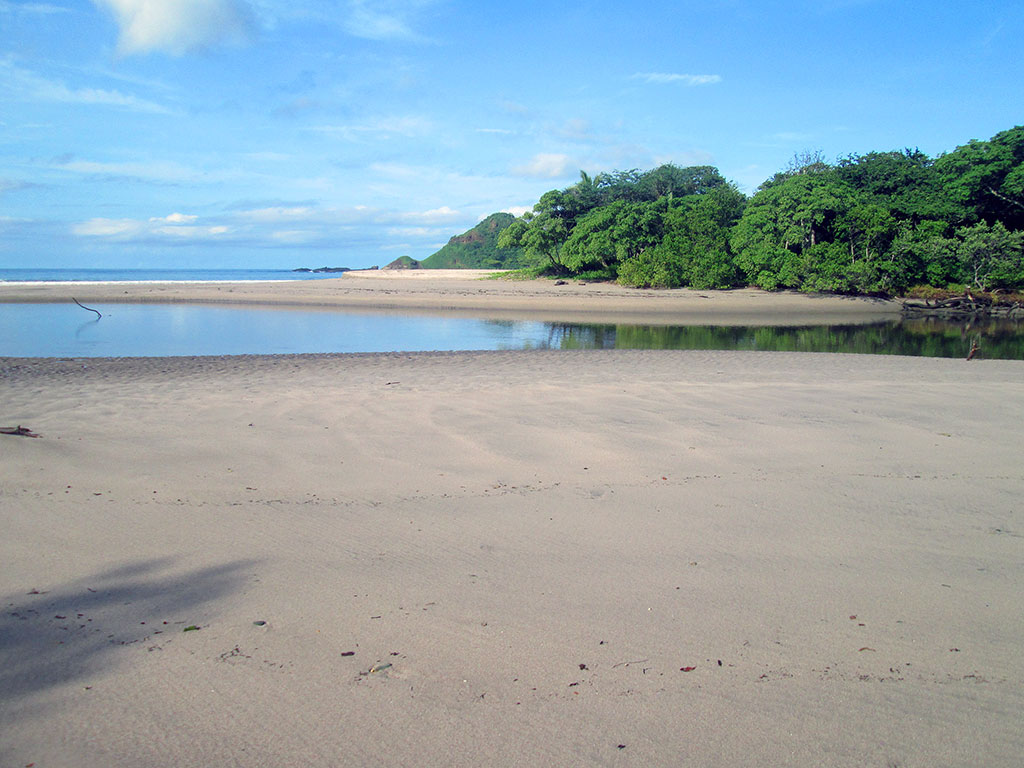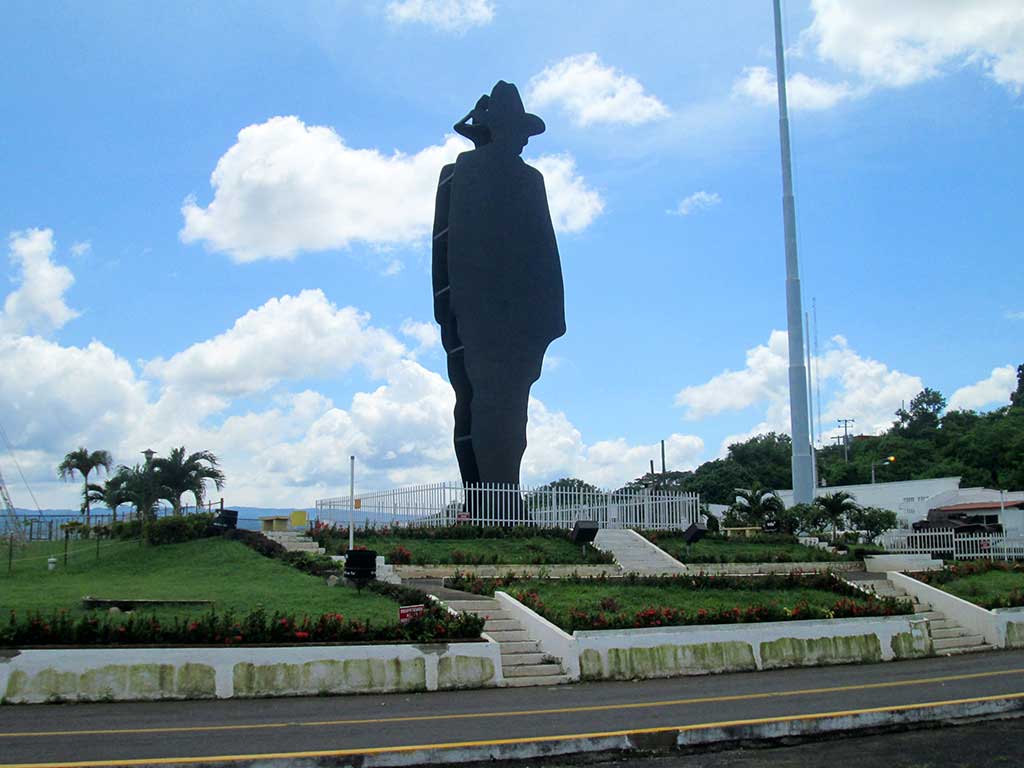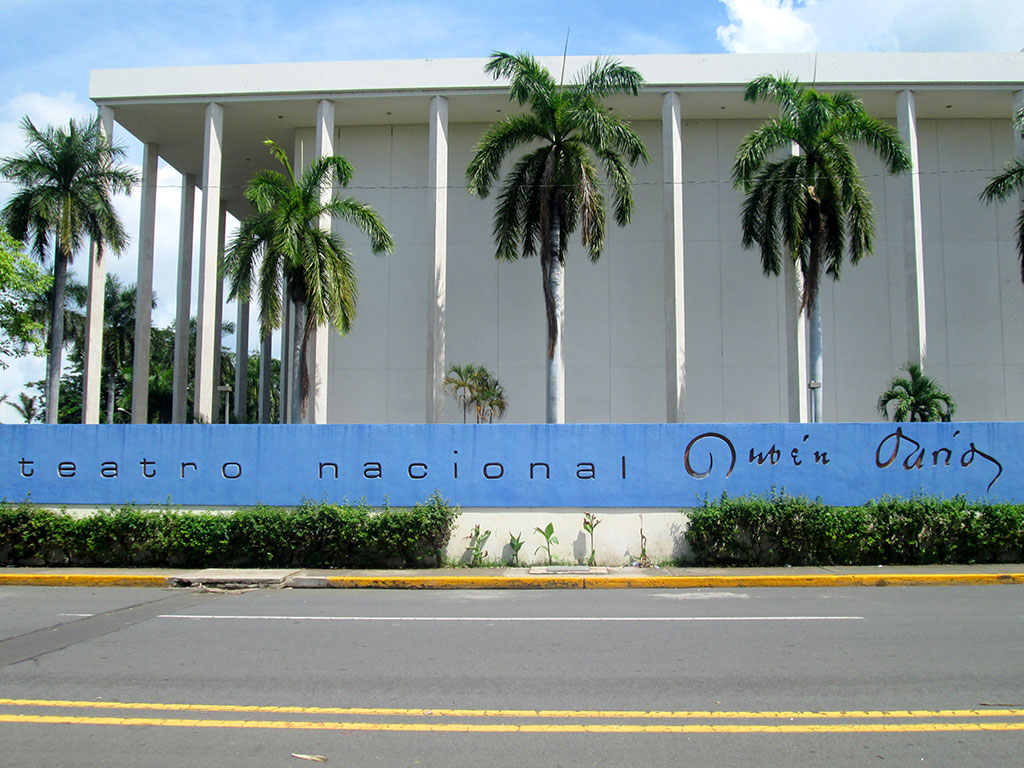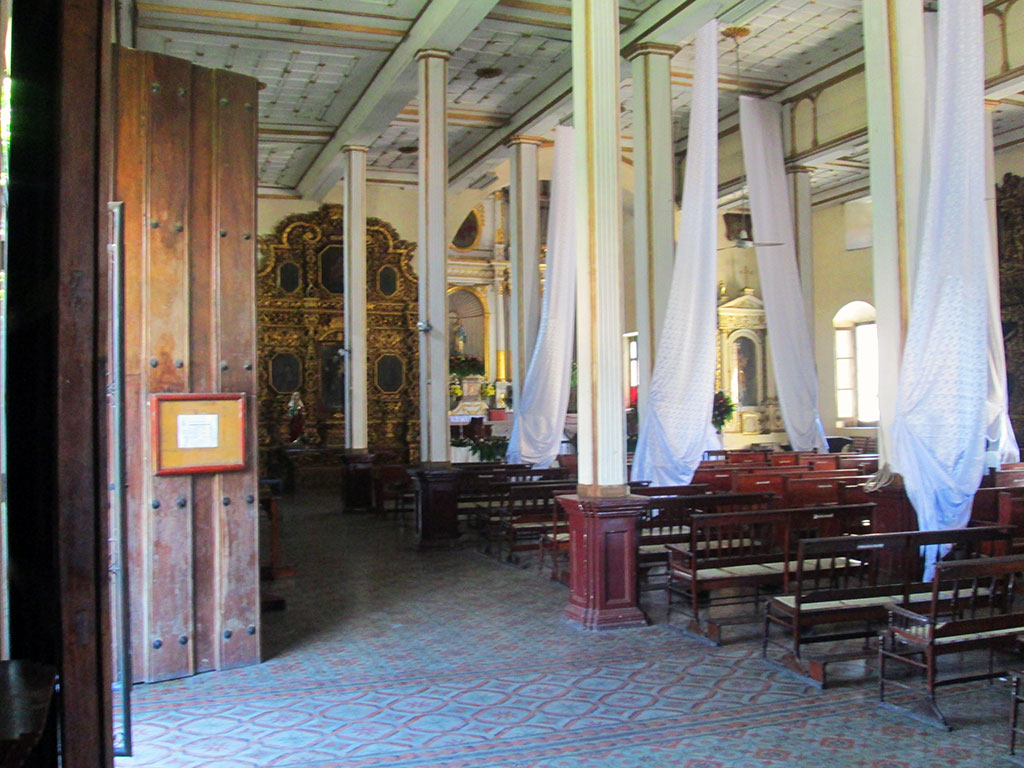
Nicaragua to celebrate its 20th year at WTM LONDON.
October 27, 2015
The Ortiz-Gurdián Foundation and its Contribution to the Cultural Development of Nicaragua and Central America
November 2, 2015Tired of the hustle and bustle of your life? Need to recharge your batteries in unforgettable surroundings, nature, culture and gastronomy? Nicaragua is the place for you and what is more its success is based on a refreshing faith in eco-sustainability. Impossible you say but it is true.
Massimo Gava reports.
“My name is Elvis, like the singer”, said my tour guide putting down the big Careli Tours placard once I got out of the arrival lounge in Managua.
“ I hope you can sing better than him” I replied jokingly. It was about 20.30 local time and after a long flight from London via Miami not sure I should have even attempted to make any jokes at all, but I got a charming “Benvenido en Nicaragua” regardless.
As soon as we left Managua’s airport the rain started to fall. It is almost at the end of the rainy season (May to October) and it is difficult to have an idea of what the capital of the country looks like but we are heading south to Granada, the most important city in tourist terms in Nicaragua.
Granada
The road to Granada is good, not too much traffic and what strikes me from what I can see in the dark is how lush the country is. With a population of about 6 million, Nicaragua is considered one of the safest countries in Latin America, located at the heart of Central America, bordered by Honduras to the north, Costa Rica to the south, the Pacific ocean to the west and the Caribbean to the east. The pacific basin is separated from the central and northern mountains by two big lakes Lake Managua and Lake Nicaragua.
It took roughly more than an hour to get to our destination but as soon as we entered Granada it was clear to me why it is also known as la Gran Sultana .
Its Moorish and Andalusian features give this city a magic feeling, including my hotel The Plaza Colon, which was right on the main square, the Plaza Mayor. I said goodbye to Elvis and hit the sack.
The following day I got up reasonably early as I had only one day to experience the city so after my first Nicaraguan breakfast, off I went. The Plaza Mayor was busy with vegetable and craft stalls but I wandered down Calzada Street – the main pedestrian precinct – until I reached Guadalupe church, a beautiful example of a Moorish building and one of the city’s well-known landmarks.
Set on the western shore of Lake Nicaragua, 50km south east of Managua, Granada is the oldest Spanish-built city in the New World It was founded in 1524 by Francisco Fernández de Córdoba, who named it after his home town in Spain. In the mid-nineteenth century it fell to American adventurer William Walker, who gained control of the city – and, by default, the entire country – for a brief time. Granada paid dearly for the eventual overthrow of Walker; as he retreated in the face of international resistance, he ordered the city to be burned to the ground and to this day several parts still evidence fire damage from that time. However Granada has since been wonderfully restored and its colonial houses and cobbled streets that run down to the shores of Lake Nicaragua are a delight to walk along.

Ruben Dario
“Si la patria
es pequeña uno
grande la sueña”
Ruben Dario
(If your country is
small, you see it large
in your dreams)
Indeed, getting lost around Granada is the perfect way to explore the city as it is fairly easy to find your way back again . After seeing the San Francisco church with its adjoining El Convento museum next door and the cathedral, I wanted to sample the local cuisine and buying from a street stall is the best way. The chicharrones (essentially pork crackling), yucca, fried bananas and chicken rolled in tacos are amongst the delicacies but if you want to go a bit more refined, there are loads of excellent restaurants all over the city at very reasonable prices. Alas I had no time to visit the nearby Masaya and Mombacho volcanoes nor go hiking in the marvellous Domitila wildlife reserve. Next time, I told myself.
Las Isletas and Lake Nicaragua.
The following day I took a boat trip to see some of Las Isletas, about 300 islands to be found in Lake Nicaragua, which is the largest freshwater lake in Central America with its own rare species of totally harmless freshwater sharks. It is vast, the second biggest in Latin America (after Lake Titicaca) and you can well understand why the Spanish conquistadors called it El Mar Dulce (The Freshwater Sea) The lake is buzzing with the locals getting around from island to island in
their boats, picking up children from school or buying from the floating food and craft markets. I am on my way to Isla Jicaro and its famous Eco-Lodge. Nicaragua is positioning itself as one of the countries with the best eco-sustainable tourist industry and the Eco-Lodge is the perfect example of this. Set on an exclusive island only ten minutes away by speed boat from the bustling city, the resort consists of only nine casitas (chalets) built with only hardwood recycled from the devastation that hurricane Felix brought about, magnificently appointed and each one with fantastic lake views. Solar panels provide all your energy needs. If you really need to communicate with the rest of the world, wi-fi internet access is available at the main reception but I can assure you, once you get there you will appreciate the pleasure of being cut off from the outside world. The open plan restaurant serves delightful dishes using locally sourced ingredients, and don’t miss out on the local alcohol-free cocktail made with herbs, lime and cinnamon and a touch of vanilla. It is uniquely delicious. Leisure facilities include an infinity pool, massage, reflexology and a floating deck on the lake for yoga.
Isla Ometepe. Totoco Eco-Lodge.
The following day I had to leave early because I had to carry on my journey with Elvis who was there at the landing stage waiting for me. We headed 90 km further south of San Jorge harbour to reach Isla Ometepe, the world’s largest volcanic island where roughly 50,000 inhabitants share their life with monkeys galore and a plethora of bird species and, thanks to the fertile volcanic soil, a wealth of citrus, banana, watermelon and avocado plantations.
The crossing took one and half hours and as we got close to the shore you get this impressive view of the twin volcanoes rising up into the sky, Concepción, the active one, and Madeira, where I was heading to, staying in another Eco-Lodge, Totoco. The drive there from the main port of Moyogalpa across the island through its lush vegetation took us way into the jungle on the slopes of the Madeira volcano, known locally as Vulcano de Agua (Water Volcano). At Totoco Lodge, because of its permaculture ethos, there are four large individual lodges scattered around the property built in a rustic, minimalistic way but with added comforts like a four-poster bed and a large private porch with hammock and the views of Concepción volcano, opposite, are truly stunning. Water is used for showering only in a closed-off private area and each cabana has its solar panel and as far as is possible everything used on the complex is recycled. The hope is that the experience here will encourage us to do the same once back home. You really do feel re-energised staying here, relaxing in the infinity pool area, getting in touch with all that the surrounding nature has to offer, leaving behind your manic western life-style. Nevertheless do try hiking up to the volcano crater full of water, weather permitting,or swim in the rejuvenating volcanic spring water pool, the ojo de agua (water eye). So if you want to get away from it all this is the place to be!
Morgan’s Rock
After two days I reluctantly left the stunning Isla Ometepe and met up again with Elvis who was eager to show me another part of his country. This time we were heading west to San Juan del Sur on the Pacific coast, the most popular beach destination for Nicaraguans but also a regular stop for the big cruise ships, full of ‘gringos’ coming from Miami on the way to Mexico and California via the Panama Canal. About 20 km away from the port of San Juan del Sur, Morgan’s Rock is at the forefront of the sustainable tourism project Nicaragua is keen to promote. With its 6000 ha of preserved virgin forest, protecting and re-introducing endangered wildlife, Morgan’s Rock is the perfect example of how to combine ethical practices with sustainable development and luxury. The place has been created by a French couple who have been living in Nicaragua for more than 40 years and its design is truly heavenly. Most of its fifteen large bungalows are nestled into the heavily wooded hillside overlooking a sweeping bay . A suspension footbridge above a forested canyon links most of the bungalows with the public areas. Once you get to your room you feel like you don’t want to leave, each room has a king-size bed, large private terrace and covered garden area with outdoor shower. Just sit on your swing bed admiring the horizon with the sound track of the mighty Pacific waves crashing in the background – brilliant and unforgettable. Getting up at the crack of dawn is the best way to appreciate the beauty of the property, you can walk down to the beach where, at night, turtles in season (August to January)
come ashore to lay their eggs. Walk up to the river’s estuary at the ocean’s mouth and be amazed by all the animal life there. On your return it is time to get a good typical Nicaraguan breakfast consisting of arroz (rice) frioles ( beans ) and scrambled eggs with fried bananas and cheese, but if you feel more adventurous I suggest you try nacatamales, a popular corncake dish made of minced pork or chicken with chopped potatoes and tomatoes, steam-cooked on banana leaves and the whole thing is served on your plate, so when you unwrap it you unleash all its mouth-watering aromas. Wildlife is abundant and the area can be explored – either independently or with a guide – on foot, by kayak, mountain bike or on horseback. Guests can learn about reforestation, accompany the lodge’s own fishermen and visit its sugar mill or butterfly farm. After a long day relax in the infinity pool overlooking the ocean and then tuck into some of the delicious regional, French and Asian cuisine the semi-open thatched restaurant serves using ingredients grown or reared on the premises.
Managua
Leaving Morgan’s Rock was hard but it was the day I had to go the furthest point in my trip, namely Leon, but on the way there, since Elvis and I were passing through, we stopped in Managua, the country’s capital city in order to experience another “mas” (plus) this beautiful country possesses.When Nicaragua gained independence from Spain in 1824, Managua became the ideal compromise to end the rivalry between the two cities of León and Granada as it lies equidistant between the two and consequently it became the symbol of peace and reconciliation for the newly-formed country. Unfortunately in December 1972 Managua was completely destroyed by a terrible earthquake with a high death toll and as a result the rebuilt city has now a modern feeling about it compared to the cities in the rest of the country. From the top of a central hill where the Sandino Monument dedicated to Augusto Cesar Sandino, leader of the rebellion against the U.S. military occupation, is situated, the full beauty of this green capital is unveiled before you because, believe it or not, Managua has the world record for the highest concentration of trees per square metre. This green expanse means it is hard to get an idea of how vast this city it is, being home to almost 1.5 million inhabitants; due to the risk of earthquake there are very few high rise buildings but once you are in the streets underneath the trees you witness all the vibrant activity of this interesting place. A walk to Plaza de la Revolución is a must because the old ruined cathedral there is the only example of what Managua was like in the old days. Next to it there is the modern National Assembly building and not far from there another impressive modern building you mustn’t miss is the Ruben Dario National Theatre, where companies from all over Latin America come to perform. And here, get another mas – in 2007, after a successful literacy campaign, the city’s mayor declared Managua the first capital in Central America to have eliminated illiteracy. Quite an achievement, I’d say, for Ruben Dario’s patria pequena (small country).
I could easily stay longer but Elvis, now my timekeeper, reminds me we’ve got to head up north to visit Leon and if we wait any longer we won’t be able to see the contrasting countryside on the way. As always, he was right because Nicaragua has the highest concentration of active volcanoes in the world and seeing them rising up in rows against the neat cultivated fields is quite an impressive contrast.
LEON
We arrived in Leon almost at sunset and by the time we got to my hotel El Convento in the town centre it was nearly dark. Another mas for me is the effect of the totally unexpected glow from the dimmed lights in the houses.
Founded in 1524 as Leon Santiago de los Caballeros, the city, the second largest in Nicaragua, moved to its present site 35 km away after being devastated by an earthquake in 1610. The country’s former capital has retained much of it religious and intellectual heritage. Leon is also a big university town where students from all over the country come to study so it has a unique youthful vibe. In addition, it is the birthplace of the Sandinista movement. In fact you can still see on many buildings, the colourful Sandinista and ant-American murals pock-marked with bullet holes, a poignant symbol of Nicaragua’s turbulent past. Moving from the profane to the sacred, to use that well-worn phrase, if you stroll around the town centre, you will come across lots of churches but nothing will compare to the largest cathedral built in Central America dominating the main square. The Cathedral of León, is a world heritage site. It was designed by a Guatemalan architect Diego José de Porres y Esquivel, and was built over a period from 1747 to 1814. It blends Baroque and Neoclassicism with some influences from the Gothic, Renaissance and Mudejar styles that you can see in so many of the other landmarks scattered around the city and it is here that prominent figures in Nicaraguan history are buried, including the writer Ruben Dario, father of the Modernist movement in Spanish. Not far from the cathedral you can also visit Dario’s house, now a museum where all his work is on display. Next door is the Ortiz Art Gallery where the Nicaraguan Art Biennale takes place (see article in this issue) and all of this is within walking distance from my hotel.
Everywhere you go, whether round the local markets or shops, you can tell that Leon is a young vibrant city perfectly in touch with its past but with a modern far-sighted vision for its future that reverberates in the general spirit of the country.
The challenge Nicaragua has set itself – to keep its relatively new tourist industry as a way to protect their resources and keep their environment intact at the same time as improving the economic status of its inhabitants – is utterly admirable and places them firmly on the world map. It is a great example to the rest of us, showing how tourism is not just about grabbing money and destroying the planet with reckless developments, but that the creation of a sustainable and conscientious approach is completely possible. So even if in Ruben’s days the parameters of a country’s ‘bigness’ were considered in a different way, it does not alter the fact the earth’s resources are diminishing and it takes a great deal of courage and pride to make eco-tourism the central plank of your developing tourism industry. It has achieved amazing results, principally because returning satisfied tourists have spread the word back home. Nicaragua, this hidden gem in Central America, is an extraordinary success story.
A big dream for a country that everywhere you go will exceed your expectations, no matter what. I would even go so far as to say, dear Ruben, la patria is bigger than ever now. No need to dream of it any more.
Definitely “Nicaragua – Mas!”
Fact Box:
Journey Latin America specialises in tailor-made holidays and small group tours to all of Latin America. For more information visit website www.journeylatinamerica.co.uk
Elvis – like the singer

































